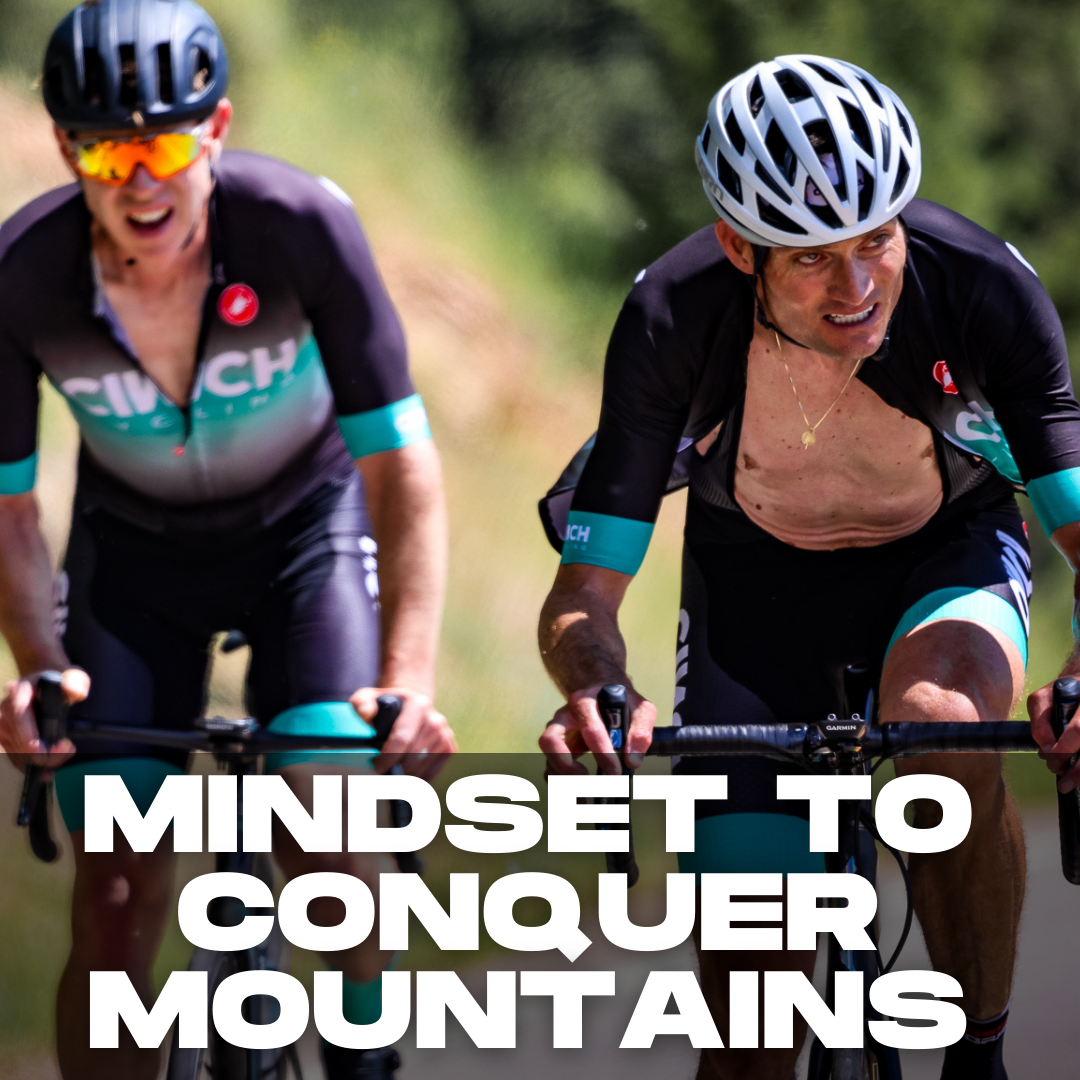Climbing is one of the most difficult disciplines in cycling. What makes it so challenging also makes it so rewarding. It blends physical challenge with mental struggle.
At CINCH we put as much focus on the mindset component area cycling (on and off the bike).
One of our mindset processes we call the Focus Performance Chain. This process has three key parts: Trigger, Cue, State. You first look for and identify certain triggers that you either come across frequently or struggle with. Then you attach a specific cue to that trigger. This cue is memorized and practiced leading you to a mental/physical reaction in which we call, a state. That state can be a free one (Cloud), a flow one (Water), an intense one (Fire), or an explosive one (Lightning).
Here is an example of how this works:
Trigger: You are climbing and starting to struggle. You feel your chest is tight and your heart racing. In the past this feeling triggers you to panic and your respiration rate goes through the roof, dropping your power and pace.
Cue: Instead panicking, you replace that with a verbal cue, “I feel strength in my body and flow.”
State: You relax your upper body and chest through easing off your grip on the bars. You take deep exhales and reset, arriving in a flow state instead of a panic state.
While this takes practice, you can start today! Here are some sample cue words that we have found to be effective that will help you find that optimal state when climbing on the bike or even when life gets challenging off the bike.

1. Boss
Be the freaking boss! Your body works for you, you do not work for your body. Practice one way communication DURING your climb. You can have the debrief where you are a good listener when the climb is said and done.

2. Strength
Climbing gives you an opportunity to feel your strength. Going uphill is freaking hard and requires your mental and physical strength. Instead of focusing on the discomfort, pivot your attention to the strength you are using to overcome the climb.

3. Drive
View the climb as if you are driving up it in your car. Read the terrain and use focus to keep your momentum.

4. Breathe
Breathe so you can hear it. Then, just like listening to your car engine tell you when to shift, pay attention to your respiration rate and control your effort like you do with your foot on the gas pedal.

5. Free
Relax and be free. Being tight will just restrict your moment and blood flow. Start with parts of your body that are already pain free, such as your hands. Relax them on your handlebars and then try and relax each muscle group from the hands all the way through your body.

6. Humility
Climbing is humbling, there is no way around that. If struggling up a mountain doesn’t make you feel vulnerable, you are not doing it right. It’s ok to feel like you are “not a climber.” You are doing it right and the sense of humility you feel from it is what you are signing up for each time you start up a climb.

7. Patience
Start the climb conservatively and let your momentum from before the climb carry you up the first part.

